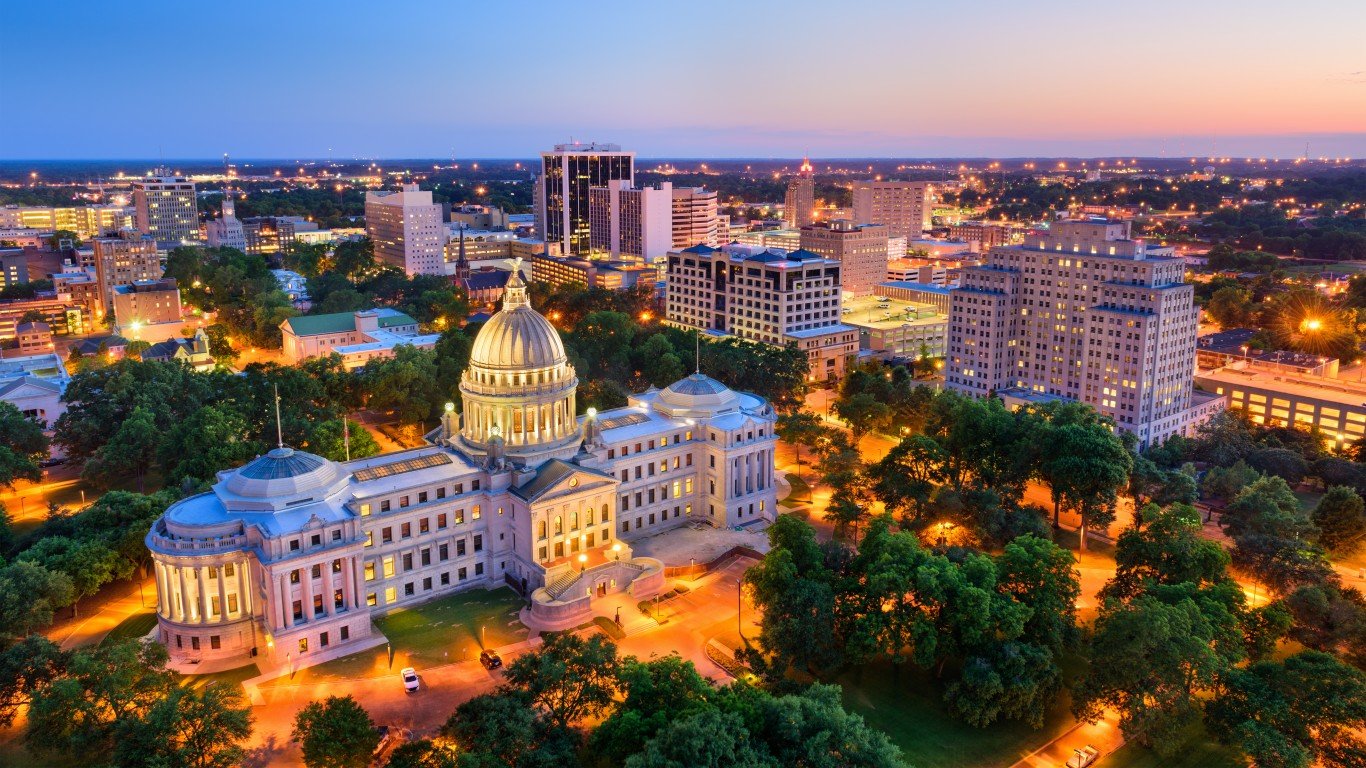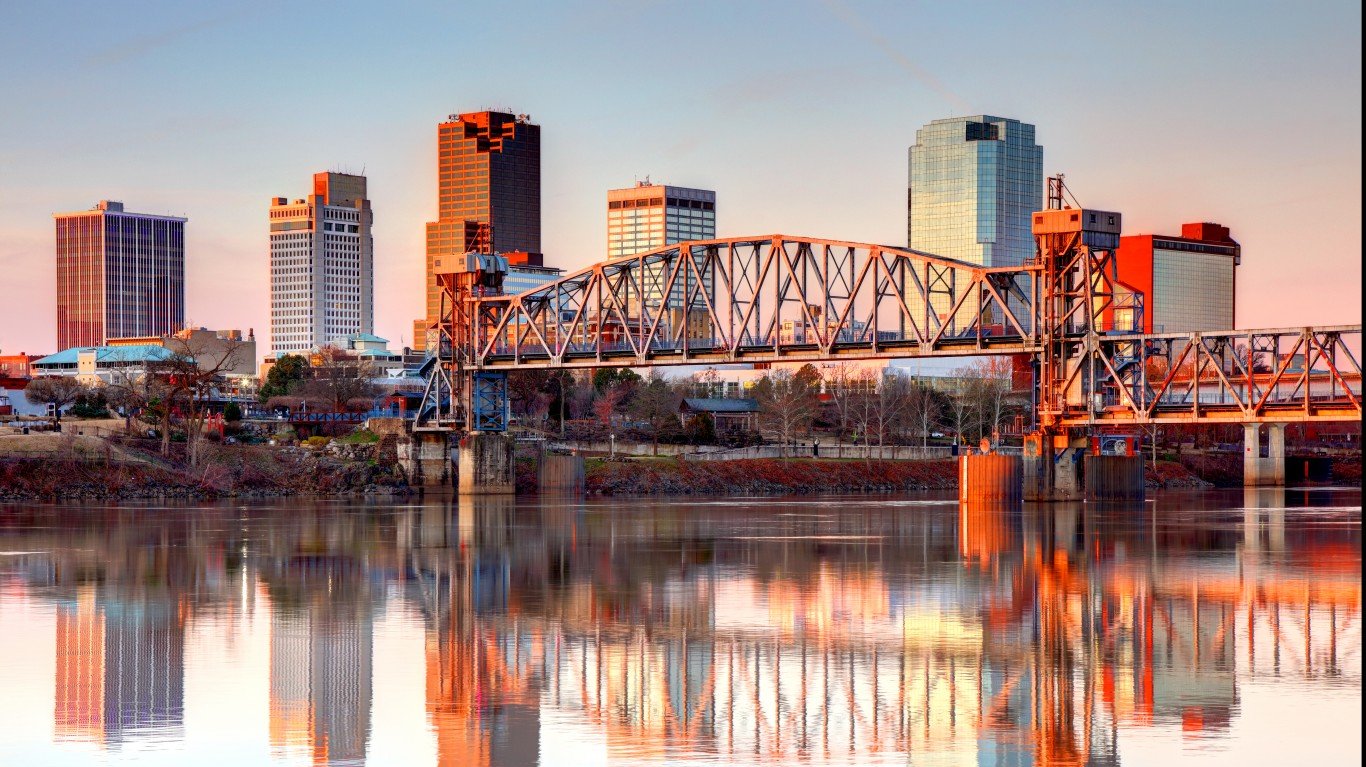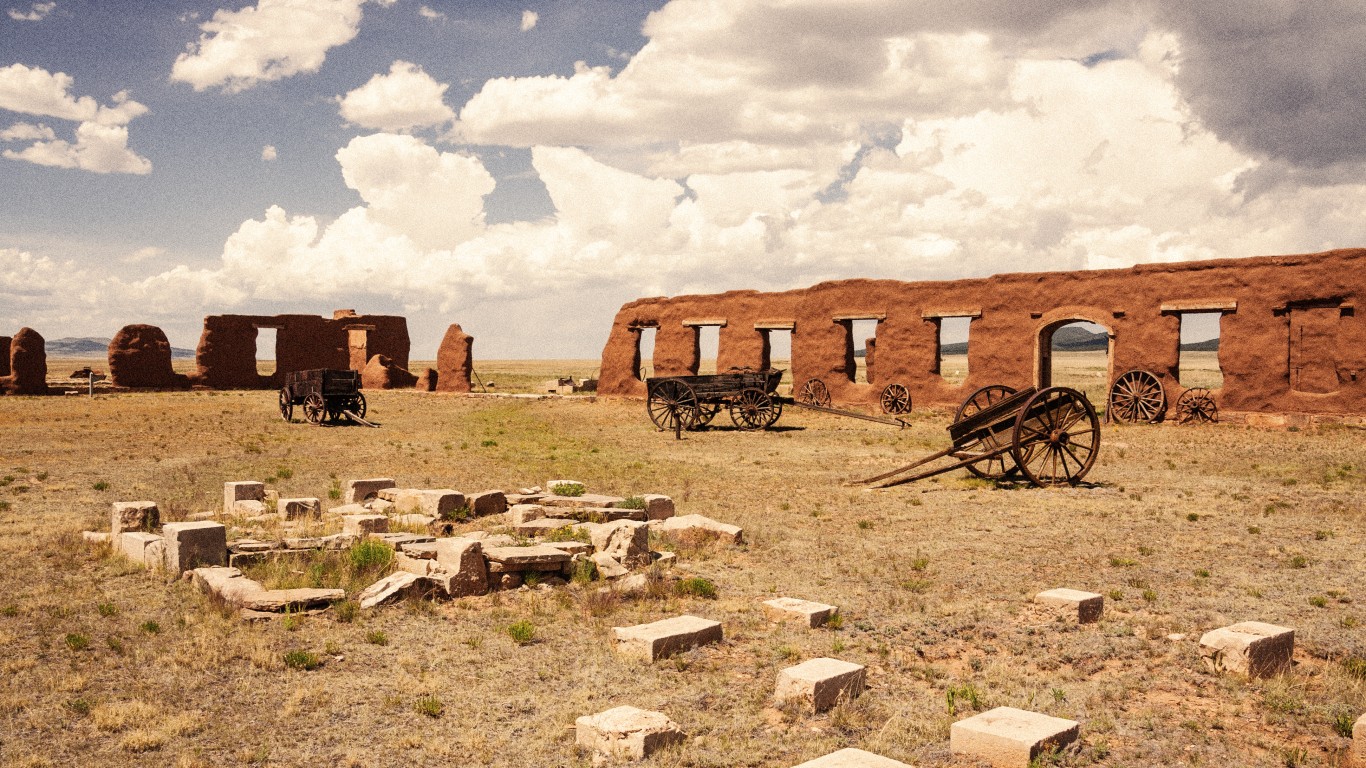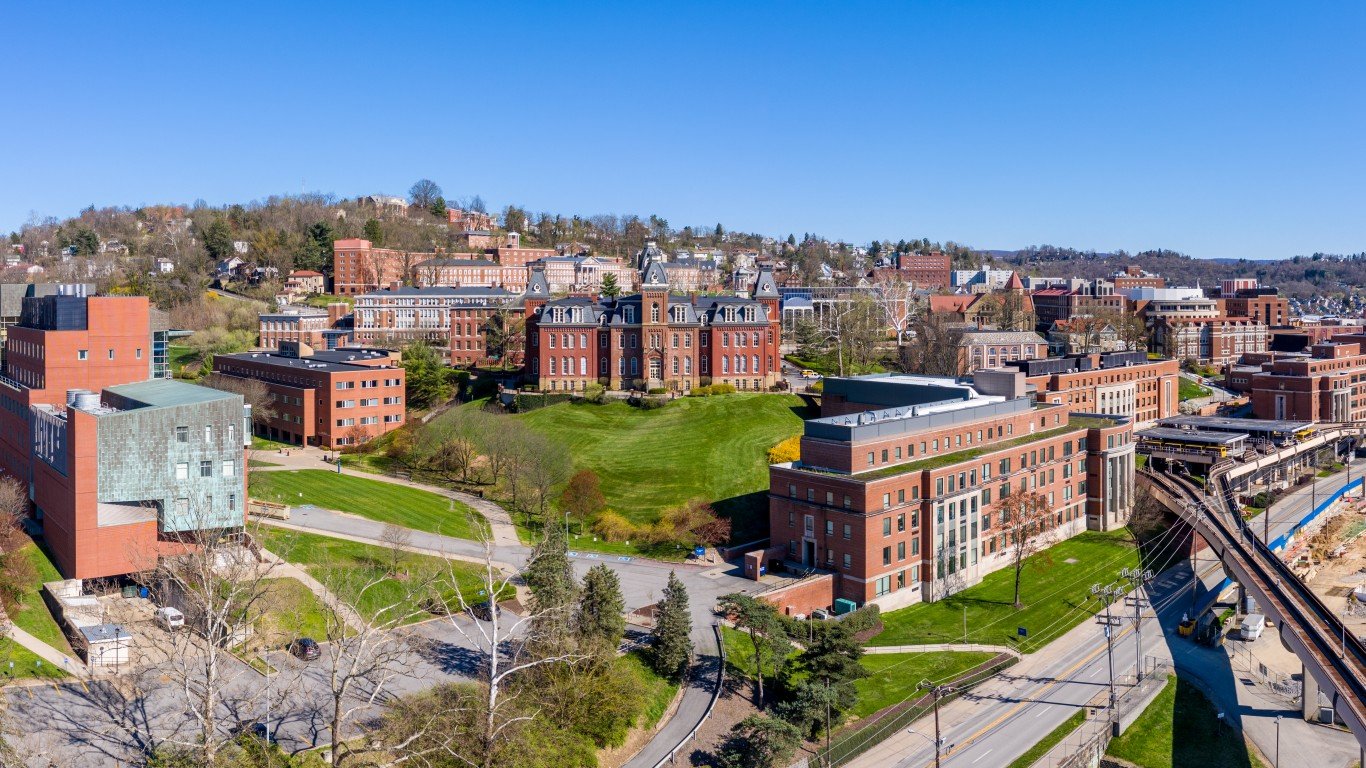
50. Louisiana
> Population: 4,624,047 (-0.7% in last year)
> Life expectancy at birth: 75.2 years (5th lowest)
> Median household income: $52,087 (3rd lowest)
> Median home value: $192,800 (11th lowest)
> Median housing costs as pct. of income: 15.5% (9th lowest)
> August 2022 unemployment: 3.8% (19th highest)
Based on a range of key socioeconomic indicators, Louisiana ranks as the worst state in the country to live in. While the state has advantages, including a low cost of living and more sunlight than most of the country, it compares less favorably in other ways.
For example, Louisiana’s 2020 violent crime rate of 640 reported incidents per 100,000 people is fifth highest among states. Incomes are also generally low in the state, with most households earning only about $52,000 or less annually, while most households nationwide earn over $69,000 annually. Women in the state’s workforce are especially disadvantaged, earning only about 73% as much as their male counterparts, the second worst gender pay gap among states. Additionally, about one-in-every-five Louisiana residents live below the poverty line, the largest share of any state.

49. Mississippi
> Population: 2,949,965 (-0.4% in last year)
> Life expectancy at birth: 73.9 years (the lowest)
> Median household income: $48,716 (the lowest)
> Median home value: $145,600 (2nd lowest)
> Median housing costs as pct. of income: 15.1% (5th lowest)
> August 2022 unemployment: 3.8% (19th highest)
Like neighboring Louisiana, Mississippi ranks as one of the worst states to live in. At just 73.9 years, average life expectancy at birth in Mississippi is the lowest of any state, suggesting many state residents have inadequate access to health care. Indeed, the state has one of the lowest health insurance coverage rates in the country.
Lower-income Americans are less likely to be able to afford health care or healthy lifestyles and diets, and the typical household in Mississippi earns just $48,716 a year, the least of any state. Other economic indicators are also lagging in the state. The most recent monthly jobless rate in the state of 3.8% is higher than in most states and Mississippi is also struggling to build its college-educated labor force, attracting relatively few college-educated new residents. Only 0.7% of all adults in the state who have a bachelor’s degree moved there in 2021 – one of the smallest such shares in the country.

48. Arkansas
> Population: 3,025,891 (+0.5% in last year)
> Life expectancy at birth: 75.5 years (7th lowest)
> Median household income: $52,528 (4th lowest)
> Median home value: $162,300 (3rd lowest)
> Median housing costs as pct. of income: 14.7% (2nd lowest)
> August 2022 unemployment: 3.5% (24th highest)
Arkansas ranks as the third worst state to live in, partially because of widespread financial hardship. The typical household in the state earns just $52,528 a year, and 16.3% of the total population live below the poverty line. Meanwhile, nationwide, the median household income stands at $69,717 and the poverty rate is 12.8%.
Access to public amenities like parks and recreation centers is also limited in Arkansas. Only about 56% of the population have easy access to places for physical activity, well below the 80% share of Americans nationwide who do. Financial hardship and limited access to places for exercise likely contribute to the state’s low average life expectancy at birth, which, at 75.5 years, is seventh lowest of all states.

47. New Mexico
> Population: 2,115,877 (-0.1% in last year)
> Life expectancy at birth: 76.9 years (13th lowest)
> Median household income: $53,992 (6th lowest)
> Median home value: $214,000 (16th lowest)
> Median housing costs as pct. of income: 15.8% (13th lowest)
> August 2022 unemployment: 4.4% (6th highest)
New Mexico’s ranking among the five worst states to live in is largely due to the high crime rates in the state. According to the FBI, there were 778 violent crimes such as robbery and homicide reported for every 100,000 people in the state in 2020, the second highest violent crime rate in the country. Property crime like burglary and vehicle theft is also relatively common. The state’s property crime rate of 2,842 incidents per 100,000 people also ranks as the second highest of the 50 states.
Serious financial hardship is also common in New Mexico, as the state’s 18.4% poverty rate is third highest in the country. The state’s high poverty rate is partially the product of a weak job market. As of August 2022, 4.4% of the state’s labor force were unemployed, more than in the vast majority of other states and well above the 3.8% national jobless rate.

46. West Virginia
> Population: 1,782,959 (-0.6% in last year)
> Life expectancy at birth: 74.3 years (2nd lowest)
> Median household income: $51,248 (2nd lowest)
> Median home value: $143,200 (the lowest)
> Median housing costs as pct. of income: 13.4% (the lowest)
> August 2022 unemployment: 4.3% (8th highest)
With a median household income of just $51,248 and a 16.8% poverty rate, West Virginia is one of the poorest states in the country. For context, the typical household nationwide earns $69,717 a year and 12.8% of the U.S. population live below the poverty line. The state’s low incomes are partially attributable to a lack of employment opportunities. As of August 2022, 4.4% of the state’s labor force were unemployed, more than in the vast majority of other states and well above the 3.8% national jobless rate.
Though the state benefits from a low cost of living, economic conditions are likely making the state a less attractive destination for college-educated workers looking to relocate. Only 0.6% of all adults in West Virginia have a bachelor’s degree and moved there in 2021 – the smallest such share in the country.





